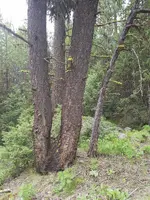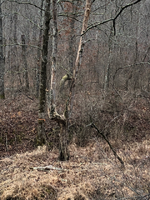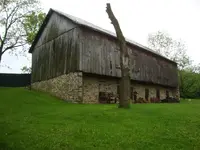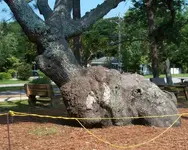View attachment 1549290
4 tree . . . there are dozens around here in different widths and heights. Some mark water, this one marked a trail exit (Indian trail trees often showed where to exit the trail ... not treasure). This one marked the exit from the Wheeler Trace (an old Buffalo trail that later became a stage coach route in the mid 19th century) ... however, you will also find hoot owl trees along these paths as well. I have one along the same trace that was likely done by John Morrell (actually saw a drawing of it by him years before finding the tree).
View attachment 1549295
This one marked a spring (near Fordyce, AR). Approached the landowner for permission to take a pic, started the conversation by saying, "So, how far in that direction is the spring?" He was curious how I knew about the hidden spring, told him the tree showed me and got to shoot some pics. BTW, sometimes the direction is not what you think. The spring this one marked was to the right, the lake marked by the first was to the left. Folks who assume all these trees are treasure trees are missing a lot of neat history.
The goalpost trees look more like this:
View attachment 1549292














